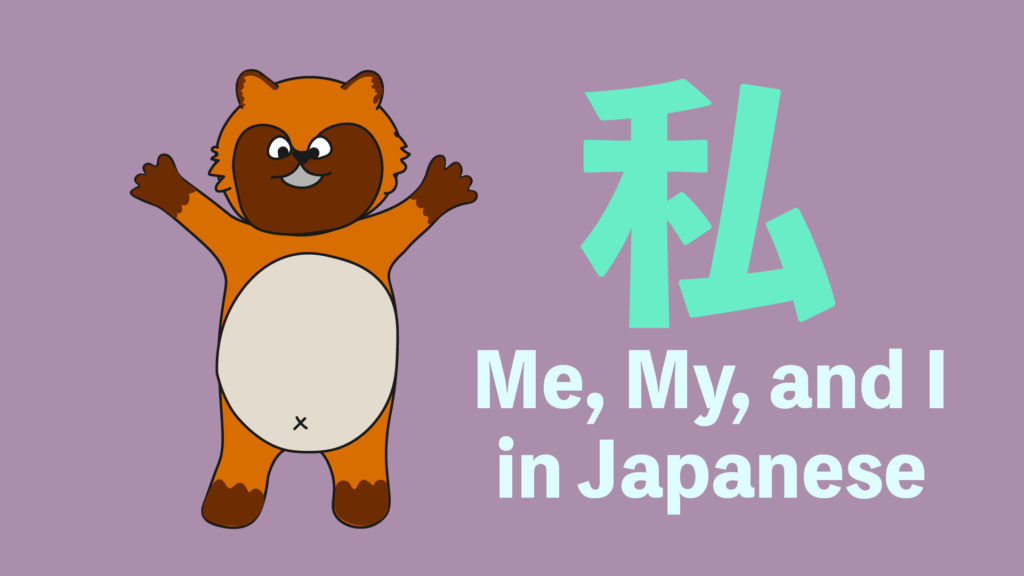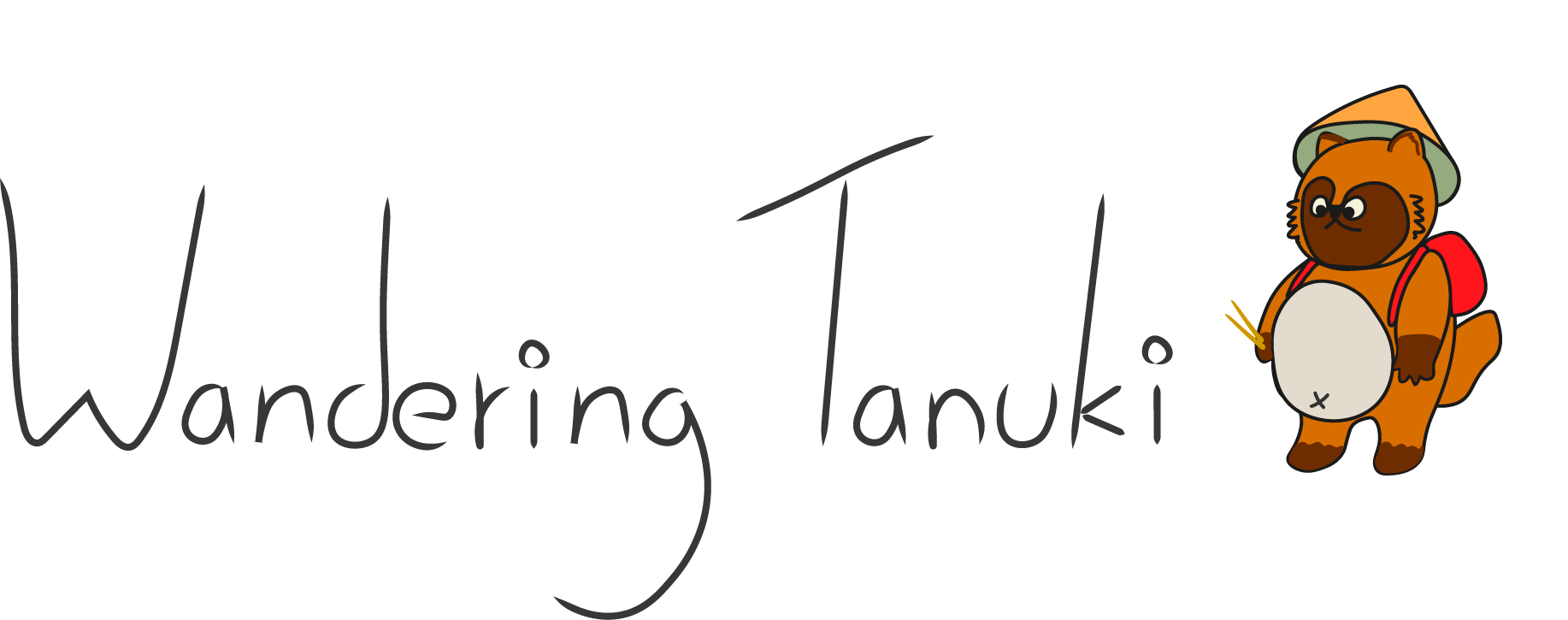Me, My, and I in Japanese: Let’s talk about yourself!
There are many different ways to say “me”, “my”, and “I” in Japanese. This is because it is a language that uses different words and nuances to represent who you are as a person. Depending on your choice of word you can seem more feminine, masculine, and more!

The concept of having so many pronoun choices can be overwhelming to English speakers! Here is everything you need to know so that you can feel comfortable when talking about yourself.
Me, My, and I can be used interchangeably
One big difference in Japanese, compared to English is that the words for “me”, “my”, and “I” are the same. You don’t have to use three separate words.
For example, let’s take the three sentences “I am American”, “Can you help me?”, and “It’s my house”.
私はアメリカ人です。
Watashi wa amerika jin desu.
I am American.
私を手伝ってくれる?
Watashi o tetsudatte kureru?
Can you help me?
私の家です。
Watashi no ie desu.
It’s my house.
Notice how all three sentences use the word 私 (watashi). As you can see, you can use the same words for “me”, “my”, and “I”
Using particles to change the meaning
So how do you differentiate between “me”, “my”, and “I” if they’re using the same word? Change the meaning using particles! These particles will be attached after the pronoun.
How to say “I”
In order to indicate that you’re saying “I” you’ll want to use the particles は (wa) or が (ga).
私は日本人です。
Watashi wa nihonjin desu.
I am Japanese
私が好きな食べ物はお寿司です。
Watashi ga sukina tabemono wa osushi desu.
The food I like is sushi.
How to say “Me”
If you want to say “me” you should use particles like を(o), に(ni), and と(to).
私を忘れないで。
Watashi o wasurenaide.
Don’t forget about me.
私と行かない?
Watashi to ikanai?
Do you want to go with me?
私にもくれる?
Watashi ni mo kureru?
Can you give me some too?
How to say “My”
“My” is easy to remember because you only need to add the particle の (no) after the pronoun.
私の猫は可愛いです。
Watashi no neko wa kawaii desu.
My cat is cute.
Different ways to say “Me”, “My”, and “I”
There are many ways to say “me”, “my”, or “I” in Japanese. Some of these pronouns are dependent on how you want to portray yourself. You can appear casual, formal, feminine, or masculine based on which one you choose.
私 – watashi
This is the most basic and gender neutral word that is used for the words “me”, “my”, or “I”. It can be used in formal to casual settings. The kanji can also sometimes be pronounced watakushi, but this is not used very often in modern society.
私はチョコレートが好きです。
Watashi wa chokoreeto ga suki desu.
I like chocolate.
あたし – atashi
If you want a more feminine image, you can use atashi. It is the slightly altered version of watashi. This shouldn’t be used in formal settings but it has a “cool girl” kind of vibe.
あたしはそっちの色の方が好き。
Atashi wa socchi no iro no hou ga suki.
I like that color more.
うち – uchi
This is another word which is mainly used by women. It is commonly used in the Kansai area. Uchi means house or household, but can also be used as a pronoun. Make sure not to use it in formal situations.
うちも行きたい!
Uchi mo ikitai!
I want to go too!
僕 – boku
For men, this pronoun is used often. It can be associated with young boys, but adults can also use it. It gives off a youthful image. It’s not too proper so I would recommend this mostly in casual situations.
僕も欲しい!
Boku mo hoshii!
I want some too!
おれ – ore
Another common word used by men is ore. This gives off a masculine and strong vibe. It can be a bit harsh/aggressive sounding so it’s best to use it only in casual situations.
おれにもくれ!
Ore ni mo kure!
Give me some too!
わし – washi
This one is not used much in modern society, but you’ll hear it if you watch some historical Japanese dramas or films. It is a variation on watashi, and can be heard by samurai or older “wise” people in films/dramas.
わしと行かないか?
Washi to ikanai ka?
Do you want to go with me?
おら – ora
This is also not actually used anymore, but you’ll hear this in dramas or films. There are still some people in certain regions of Japan that might use it as part of their dialect.
おら知らない。
Ora shiranai.
I don’t know.
How to say “myself”:
自分 – myself or yourself
Unfortunately, the pronouns we’ve covered don’t work for saying “myself”. Instead you have to use a separate word, jibun. This can be confusing because it can also stand for “yourself”. Try to understand which one based on context!
For example:
自分で出来る。
Jibun de dekiru.
I can do it myself.
When to omit pronouns
In Japanese, it’s natural to omit pronouns whenever possible. The pronoun is usually inferred based on the context. You might be wondering when you can omit them and when you can’t.
Here are the times when you need a pronoun:
1. When saying “my” you need to put a pronoun. Otherwise people won’t know what you’re talking about.
For example:
私の家
Watashi no ie
My house
HOWEVER: If there is already a pronoun in the beginning of the sentence for a different reason don’t use it again!
This is incorrect!
私は私の車を洗う。
Watashi wa watashi no kuruma o arau.
I will wash my car.
Correct version (make sure to omit second pronoun)
私は車を洗う。
Watashi wa kuruma o arau.
I will wash my car.
2. When you want to emphasize something about yourself. For example, if everyone is talking and you want to voice your opinion on ice cream, you’ll say:
私はチョコレート味が好き。
Watashi wa chokoreeto aji ga suki.
I like chocolate flavor.
3. Any situation where it would make it difficult to understand the context.
Nuance difference when omitting pronouns
It’ll take time and experience to know when and when not to add pronouns. I suggest to take sentences and try out how it sounds with or without it. Ask yourself if the other person would know “who” you’re talking about.
Also, always keep in mind that the Japanese language doesn’t use pronouns as frequently as in English! You can likely omit it more often than you think.
Here’s an example, where you can see the difference in nuance from having or not having the pronoun.
今から学校に行く。
Ima kara gakkou ni iku.
I’m going to the school now.
私は今から学校に行く。
Watashi wa imakara gakkou ni iku.
I’m going to the school now.
In English, both are the same! But the first sentence would be said if you’re the one clearly talking about what you’re going to do. There’s no need to add “I” because it’s obvious you’re speaking.
In the second one, you might say this if people around you are sharing what they’ll be doing now. This is just to emphasize what your plans are in comparison to other people.
I hope you feel confident in knowing how to say “me”, “my”, and “I” in Japanese! As you use Japanese and get used to how native speaker’s are using it you’ll naturally begin to understand how to use them. If you’re interested in other Japanese language learning blog content be sure to check out Colors in Japanese: Everything you need to know or https://wanderingtanuki.com/you-in-japanese/
~ Tanuki





